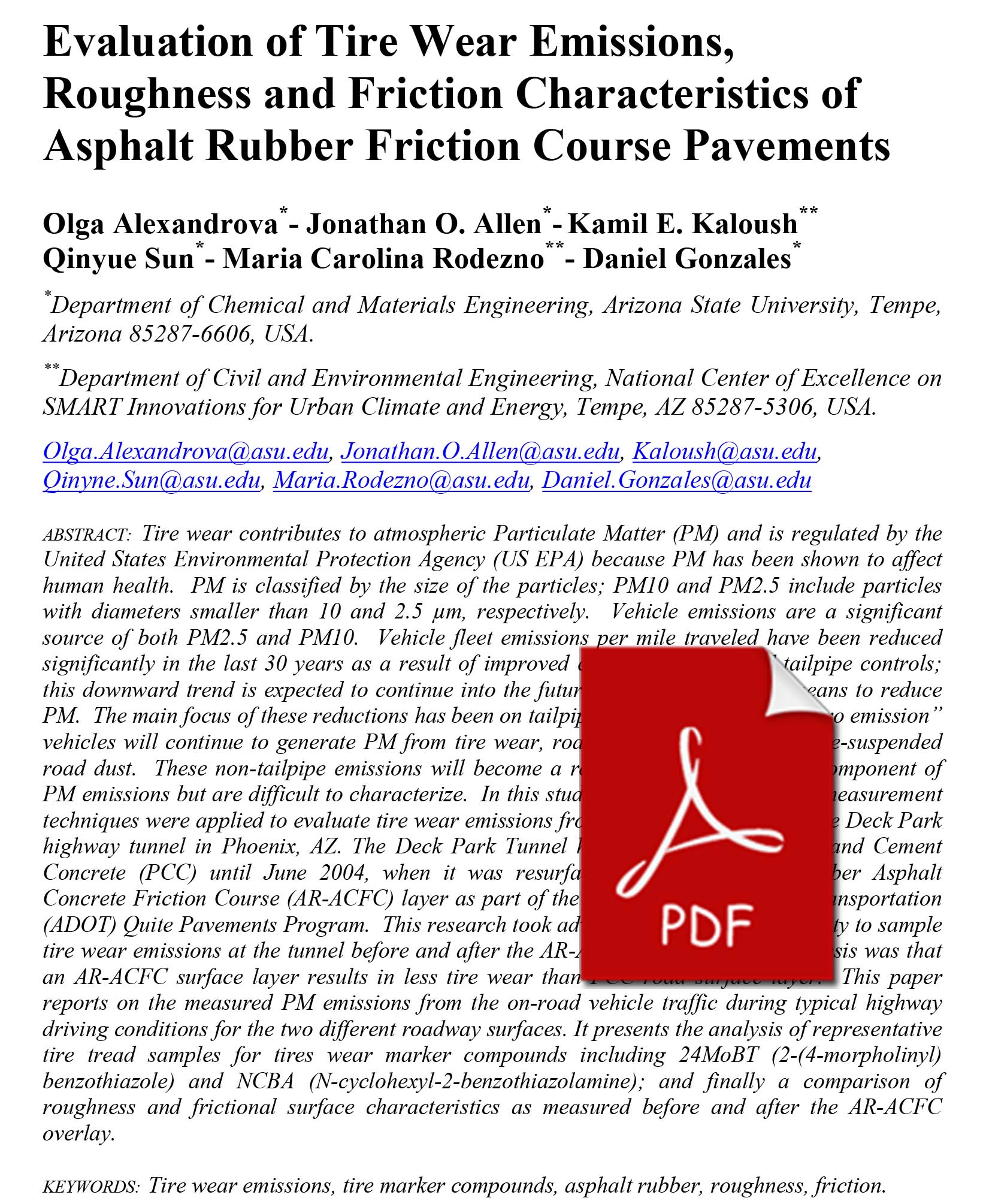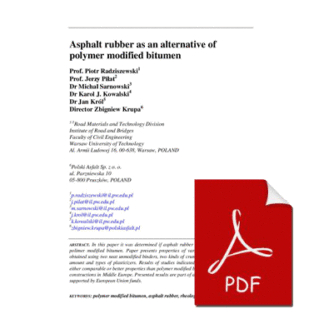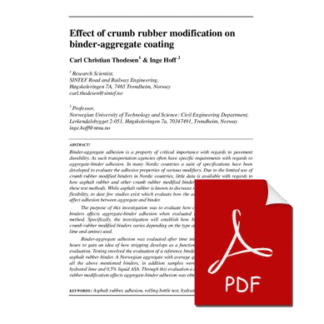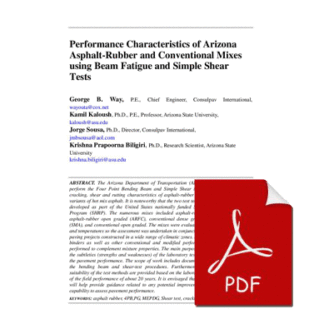Description
Tire wear contributes to atmospheric Particulate Matter (PM) and is regulated by the United States Environmental Protection Agency (US EPA) because PM has been shown to affect human health. PM is classified by the size of the particles; PM10 and PM2.5 include particles with diameters smaller than 10 and 2.5 μm, respectively. Vehicle emissions are a significant source of both PM2.5 and PM10. Vehicle fleet emissions per mile traveled have been reduced significantly in the last 30 years as a result of improved engine operation and tailpipe controls;
this downward trend is expected to continue into the future and is an important means to reduce PM. The main focus of these reductions has been on tailpipe emissions; however, “zero emission” vehicles will continue to generate PM from tire wear, road wear, brake wear, and re-suspended road dust. These non-tailpipe emissions will become a relatively more important component of PM emissions but are difficult to characterize. In this study, existing ASU’s aerosol measurement techniques were applied to evaluate tire wear emissions from the vehicle fleet using the Deck Park highway tunnel in Phoenix, AZ. The Deck Park Tunnel highway surface was Portland Cement
Concrete (PCC) until June 2004, when it was resurfaced with an Asphalt Rubber Asphalt Concrete Friction Course (AR-ACFC) layer as part of the Arizona Department of Transportation (ADOT) Quite Pavements Program. This research took advantage of a rare opportunity to sample tire wear emissions at the tunnel before and after the AR-ACFC overlay. The hypothesis was that an AR-ACFC surface layer results in less tire wear than PCC road surface layer. This paper reports on the measured PM emissions from the on-road vehicle traffic during typical highway
driving conditions for the two different roadway surfaces. It presents the analysis of representative tire tread samples for tires wear marker compounds including 24MoBT (2-(4-morpholinyl) benzothiazole) and NCBA (N-cyclohexyl-2-benzothiazolamine); and finally a comparison of roughness and frictional surface characteristics as measured before and after the AR-ACFC overlay.







